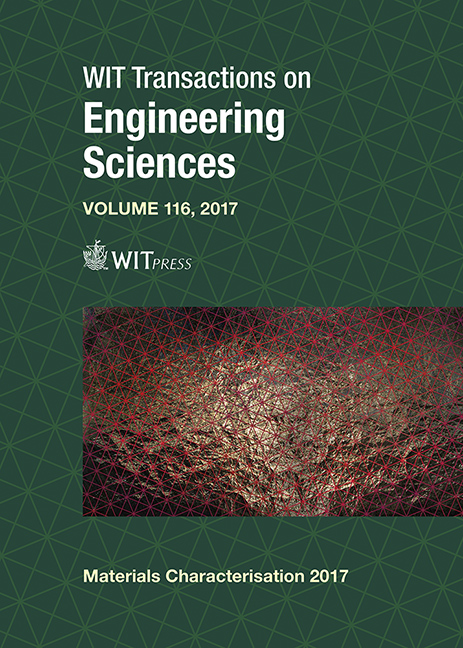NUMERICAL EVALUATION OF BARELY VISIBLE IMPACT DAMAGE IN A CARBON FIBRE-REINFORCED COMPOSITE PANEL WITH SHEAR LOADING
Price
Free (open access)
Transaction
Volume
116
Pages
13
Page Range
73 - 85
Published
2017
Size
662 kb
Paper DOI
10.2495/MC170081
Copyright
WIT Press
Author(s)
JAKUB ŠEDEK, PETR BĚLSKÝ
Abstract
Impact by foreign objects is a concern for most composite structures, requiring attention in damage threat assessment. The purpose is to identify impact damage severity and detectability for design and maintenance. Barely visible impact damage (BVID) requires special treatment due to the difficulties in detecting it by any visual inspection method. BVID can reduce the load-carrying capability of a composite structure and, therefore, it can cause severe damage. The low-velocity impact causing BVID in a composite panel was studied via a numerical method using finite elements (FEs) with the explicit dynamic integration method. A ply-by-ply three-dimensional model with cohesive zone behavior of interaction was created, enabling a detailed study of material degradation through composite thickness. Two cases with double impact and with no impact were analyzed. Impacts directed near the hole’s edge caused delamination and ply degradation. Subsequently applied shear loading shows the impact influence on the strength of the panel. The numerical results confirm a decrease in the strength of the composite panel after impact, as expected, but differences in displacement behavior were also observed. According to the FE solution, buckling appears in regions of impact before rupture, while test results reported rapid failures in the compression zone and tension zone, independently, in two stages. On the other hand, the FE results of the non-impacted panel show two independent failures, as observed experimentally. As a result, the unrealistic buckling is attributed to a decrease in element stiffness during impact. In conclusion, the final strength of the impacted panel was predicted by the FE solution sufficiently. The BVID modelling approach presented in this study is useful in the case of small-scale models such as a flat panel. The research has received funding from the European Union’s Seventh Framework Programme for Research, Technological Development and Demonstration within CANAL (CreAting NonconventionAl Laminates) project under grant agreement number 605583.
Keywords
composite panel, FEM, impact, shear loading





